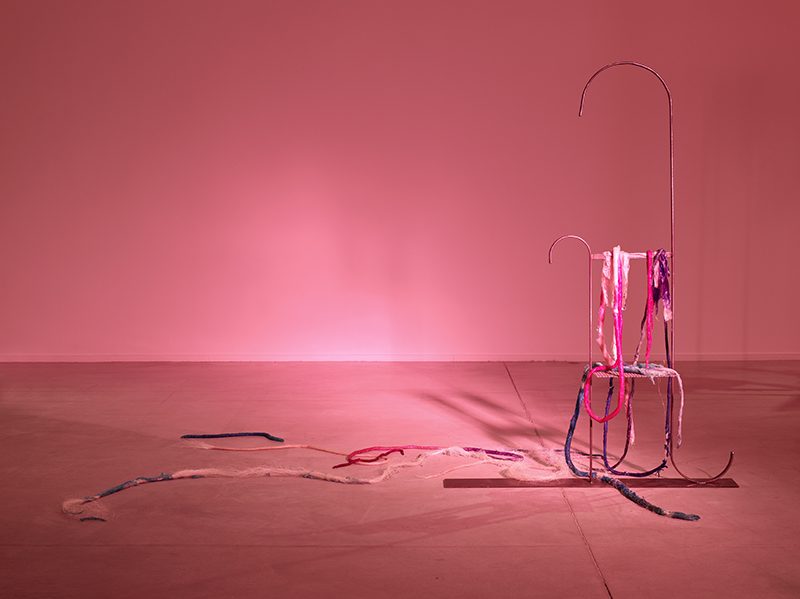
Laure Vigna
You are interested in the experience of the material, the forms produced and the transformation process. Could you tell us what links you have with nature and materials, natural and artificial ?
What interests me is to build dialogues between different entities and materials, playing on phenomena of rejection, porosity or adaptation. I create environments/ecosystems that define their own material conditions. When I start working with a material, I wonder about its history, it brings depth to its mere plasticity.
I am particularly looking for what is not fixed and that is unstable. I see potential in there. A situation is complexified when it evolves and deteriorates. Reactions ensue.
By taking an interest in the different states of matter, my sculptures explore different temporalities and spaces, and embody forms in transition.
My experimental use of materials has recently led me to develop part of my work by manufacturing my own materials derived from biodegradable sources with a limited life span and different phases of degradation (such as bioplastic with starch). Often, I make these ‘evolving’ substances coexist with a structure which they almost integrate or compose.
The components and their conditions are parasitized in order to test behaviors. The shape of the sculpture consistently transforms until its potential disappearance.
You are also interested in territories, how do they influence your practice ?
My many trips have influenced my relationship to production and have led me to rethink our use of materials and of the traces they leave behind, ergo questioning production methods, the economy/ecology of materials, logics of conservation, reprocessing or of destruction.
I started working with food and organic elements when going abroad for projects or for residencies. These trips were a chance to find materials easily, as I was looking for food. It also helped working towards a certain economy and minimized transports, since half of the materials ended up as compost or going down the drain. Getting supplies from the nearest grocery store and working in my kitchen (my only workspace being my domestic space) allowed me to be independent in the making of my own materials. In fact, I associate the way I work in the kitchen to the workshop; making recipes-scripts that adapt to the ingredients at hand.
A territory is also a climate, a material in its own rights that informs, influences, impacts my works’ shapes. Moreover, a viticulture climate (more particularly that of the Bourgogne region where I come from) designates a plot of vines’ history and specific geological and climatic conditions.
The materials I manufacture are dependent on the thermal condition in which I develop them. They react to their direct environment and are bound to places and seasons.
